Maritime Electric unveils wide-ranging plan to protect P.E.I.'s power grid as the climate changes
Maritime Electric has released a sweeping set of strategies that it says will help protect Prince Edward Island's electrical grid against future climate-related hazards.
The electric utility's 75-page Climate Change Adaptation Strategy, released on Thursday, comes in the wake of a 2022 risk assessment spurred by post-tropical storm Dorian in 2019.
When Fiona struck the Island in September 2022, leaving tens of thousands of customers without power for days, further questions were raised about how well the province's main electrical grid could withstand severe weather in the future.
"The intensity and frequency of extreme weather events are expected to increase in the future due to climate change," reads the report's executive summary.
"Maritime Electric is committed to plan for and adapt to the changing regional climate to maintain reliable electricity service for customers."
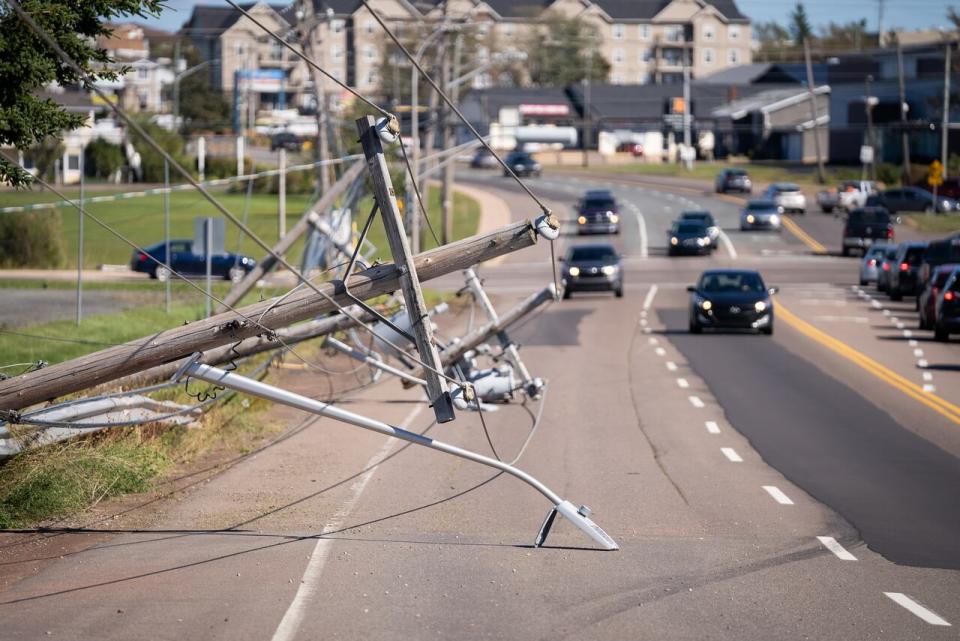
The climate adaptation document lays out 17 strategies across Maritime Electric's operations.
It also outlines some options the utility won't be exploring despite those post-Fiona concerns, like installing steel poles for power lines everywhere on the Island or burying all new lines underground.
Wood poles are more environmentally friendly, and can last just as long. — Maritime Electric strategy
The report says Maritime Electric uses steel poles in some areas like river crossings where wood poles can't be installed.
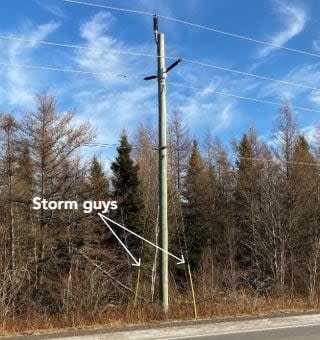
But it points out that those poles are more expensive to buy and less versatile.
"Adding lines and attachments is more complex and performing live line work is more challenging for steel poles compared to wood poles," the report states.
"Also, wood poles are more environmentally friendly, and can last just as long."
Maritime Electric says there are ways to add extra guy-line support to poles to give them more strength when severe winds blow trees down onto nearby lines.
Buried lines more costly
When it comes it underground power lines, the document does outline some benefits — like improved reliability and less need for tree trimming — but it says buried lines are more expensive and can pose other problems.
"Underground power lines can also have longer restoration times if outages occur, are difficult to inspect, require outages when connecting new customers, are more difficult to upgrade for load growth, and can be prone to flooding in coastal or low-lying areas," the report reads.
Maritime Electric does say it will look at changes to its rules and regulations to make underground service lines more economical for customers, however.
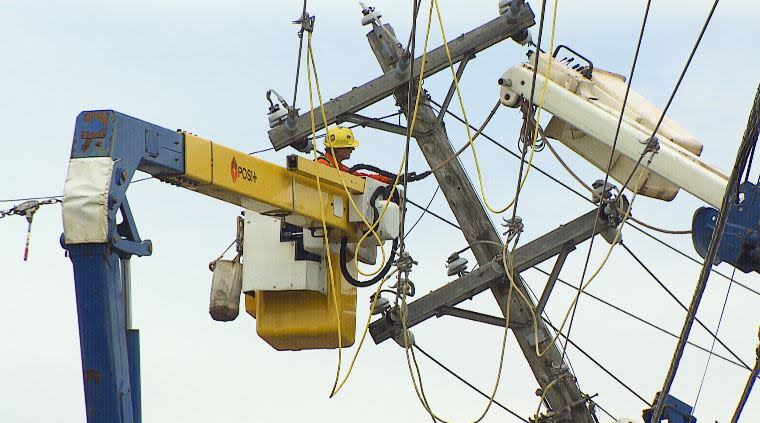
Some of the main climate-related risks to P.E.I.'s grid identified in the report include:
Trees will be growing faster and taller as temperatures and humidity rise, at the same time that growing seasons are extended and more precipitation falls. That means more trimming needed to keep branches away from wires and poles.
Galloping, a phenomenon caused when ice forms on conductors at a time of moderately strong crosswinds that whip the wires, can weaken pole structures and conductor connections. More of it is expected in the decades ahead.
During Hurricane Fiona, more than 2,000 Maritime Electric customers suffered damage to the service masts where power lines connect to their houses and businesses, putting those buildings near the end of the line for restoration. They had to book a private electrician to repair the broken masts, sometimes meaning a delay in getting the lights back on.
The Charlottetown generating station site, located near the Charlottetown waterfront, has previously flooded during extreme rain and storm surge events. In January 2000, flooding occurred in the basement area of the steam plant building, so equipment has had to be raised to prevent damage in future floods.
Girding the grid
To combat those challenges, the strategy outlines some things Maritime Electric is already doing, or plans to do as long as it wins regulatory approval and funding.
One big piece of the puzzle is building redundancy into the transmission system, with two paths of power lines connecting to more of the province's communities so that power can stay on when there's an issue with one of the paths.
"In 2023, Maritime Electric received regulatory approval to construct a switching station in Western P.E.I., which will create a transmission loop in the region... [to] provide an alternate route for Maritime Electric to serve customers in the event of an outage to one of the transmission lines," the report noted. "The project is expected to be completed by 2025."
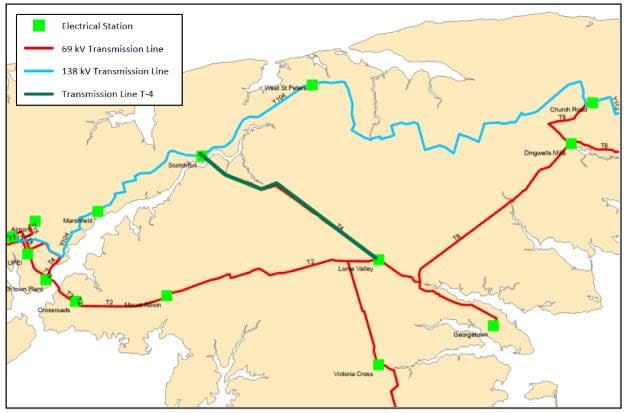
In the eastern part of the province, the same kind of backup will come from an additional autotransformer to the Lorne Valley switching station, the report said. The work, which the utility said is subject to regulatory approval, could start in 2025.
Most of the ideas in the Maritime Electric strategy involve fortifying the grid's existing infrastructure with new technologies to prevent cascading power failures, ice buildup and galloping, as well as retrofitting substations to increase their resilience in high winds.
For one thing, the utility said it will be testing break-away masts on homes. These will ensure lines connecting street power poles to houses will suffer less damage when trees fall on them, and the masts can be reinstalled quicker.
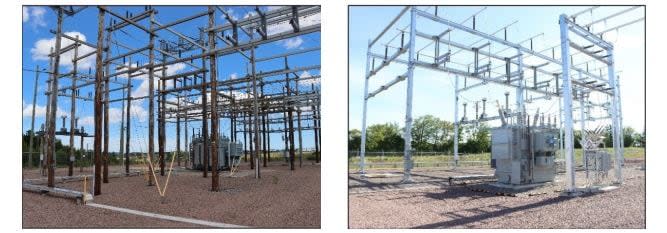
The company will also review transmission lines that pass through densely wooded areas and look at options for widening the right-of-way in those areas. That will mean trimming or cutting down trees farther onto private property in some cases.
A study specific to the Charlottetown generating station site will ensure any future infrastructure is designed at an appropriate elevation or with flood mitigation measures applied. The study will help address stormwater drainage deficiencies, and require extra inspections of underground power distribution vaults under densely built parts of Charlottetown after "extreme rainfall events that exceed 106 mm of rain in 24 hours."
Maritime Electric is also seeking approval from the province for an increase in funding to its power line corridor widening and vegetation management program. If approved, the total investment in vegetation management will increase to around $4.4 million in 2024 and $5.2 million the following year.
The 2025 total would be more than double the vegetation management budget in 2021.


